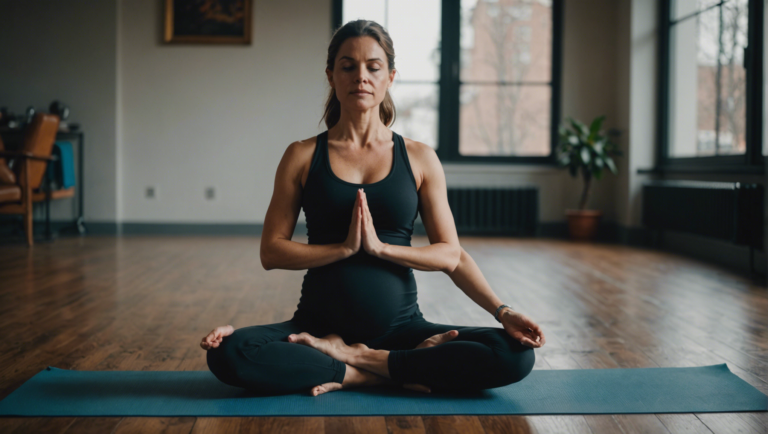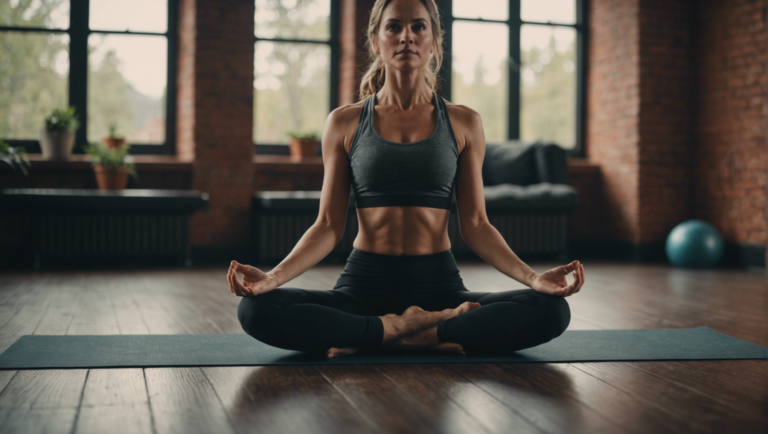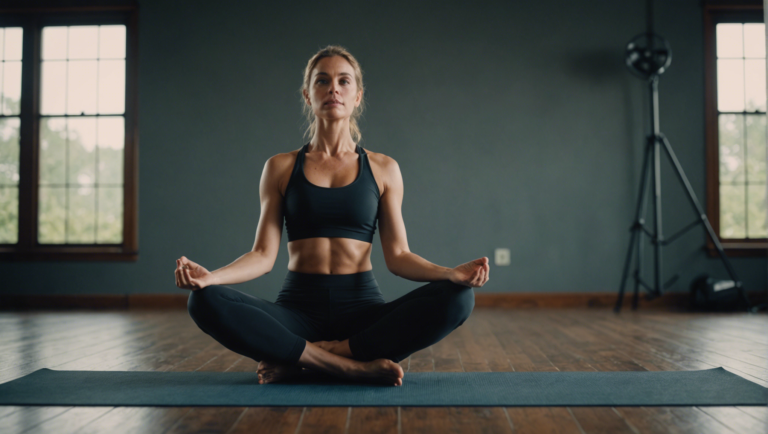Can Yoga Provide Relief For Back Pain?
Exploring the Effectiveness of Yoga in Alleviating Back Pain
Back pain, a common ailment affecting individuals of all ages and walks of life, often leads to discomfort, limited mobility, and a decrease in quality of life. Traditional methods of alleviating back pain include medication, physical therapy, and, in severe cases, surgery. However, an increasing number of people are turning towards more holistic approaches, with yoga emerging as a widely recognized and effective method for managing and reducing back pain.
Unveiling the Connection Between Yoga and Back Pain Relief
Yoga, with its origins rooted in ancient India, is a multifaceted practice that combines physical postures, breathing techniques, and meditation. It is designed to promote physical and mental well-being. When it comes to back pain, yoga offers a gentle yet powerful approach to strengthen the back, enhance flexibility, and improve posture, all of which are essential components in alleviating and preventing back pain.
A variety of yoga poses specifically target the muscles in the back, helping to relieve tension, build strength, and increase range of motion. Poses such as the Cat-Cow Stretch, Child’s Pose, and Downward-Facing Dog have been shown to be particularly effective in this regard. Additionally, the practice encourages mindfulness and stress reduction, which can also play a significant role in managing pain sensations.
Analyzing Scientific Evidence Supporting Yoga for Back Pain Management
The effectiveness of yoga in managing back pain is not merely anecdotal; numerous scientific studies and clinical trials have provided evidence supporting its benefits. Research suggests that yoga can significantly reduce pain intensity, improve functional mobility, and enhance quality of life in individuals suffering from chronic back pain. Moreover, the practice has been found to be as effective as, if not more than, traditional physical therapy treatments in some cases.
One notable study published in the Annals of Internal Medicine revealed that participants who engaged in a yoga routine specifically designed for back pain relief reported greater improvements in pain and functionality over a 12-week period compared to those who received standard medical care. These findings underscore yoga’s potential as a viable adjunct therapy for back pain sufferers.
Implementing Yoga Practices Safely for Back Pain Alleviation
While yoga offers promising relief for back pain, it is crucial to approach the practice with mindfulness and caution, especially for beginners or those with existing back issues. Seeking guidance from qualified yoga instructors who have experience in dealing with back pain can ensure that the poses are performed correctly and safely, minimizing the risk of injury.
Starting with gentle poses and gradually progressing to more advanced practices allows the body to adapt and strengthen without strain. Listening to one’s body and modifying poses as necessary is also key in preventing overexertion and ensuring that the practice remains beneficial rather than harmful.
Embracing Yoga as Part of a Comprehensive Back Pain Management Strategy
Yoga, with its holistic approach to health and wellness, offers a compelling alternative or complement to conventional back pain treatments. However, it is important to recognize that while yoga can significantly contribute to pain relief and prevention, it should ideally be part of a broader, individualized pain management strategy that may include medical treatment, physical therapy, and other forms of exercise.
For individuals suffering from chronic or severe back pain, it is advisable to consult with healthcare professionals before embarking on a new yoga practice. Collaborating with practitioners from both conventional and complementary medical fields can ensure a well-rounded and effective approach to managing back pain.
Exploring the Path to a Pain-Free Life Through Yoga
As yoga continues to gain recognition as an effective method for managing back pain, individuals are empowered to explore this ancient practice as a pathway to improved health and a pain-free life. Through regular practice, education, and a mindful approach, yoga can not only provide relief from back pain but also enhance overall well-being, offering a holistic remedy to one of modern society’s most prevalent health issues.
How Specific Yoga Poses Target and Relieve Back Discomfort
Yoga, a practice with roots stretching back thousands of years, has evolved into a globally embraced system for improving physical and mental well-being. Among its many benefits, relief from back discomfort stands out as a particularly valuable aspect, making it a subject of increasing interest for those seeking natural, holistic approaches to health. The connection between specific yoga poses and the alleviation of back discomfort is not only supported by anecdotal evidence but is also starting to be corroborated by scientific research, emphasizing yoga’s potential as a therapeutic tool.
Unveiling the Healing Power of Yoga for Back Discomfort
Yoga offers a multifaceted approach to health, blending physical postures, breath control, and meditation to promote overall well-being. When it comes to addressing back discomfort, certain yoga poses are particularly effective, targeting the underlying causes of pain, such as muscle tension, poor posture, and lack of flexibility or strength. These poses, when performed regularly and with proper form, can significantly reduce discomfort, enhance spinal alignment, and improve mobility.
The Role of Flexibility and Strength in Alleviating Back Discomfort
One of the key principles behind yoga’s effectiveness in relieving back discomfort is its ability to improve flexibility and strength simultaneously. Many back-related issues stem from imbalances in the body, whether due to sedentary lifestyles, repetitive movements, or uneven strength distribution. Yoga addresses these issues holistically, fostering greater harmony in the body and leading to noticeable reductions in discomfort.
Discovering the Most Beneficial Yoga Poses for Back Health
Certain poses, known for their targeted benefits, have emerged as particularly beneficial for those experiencing back discomfort. These include:
- Child’s Pose: This gentle stretch alleviates tension in the back, hips, and thighs, promoting relaxation and pain relief.
- Cat-Cow Stretch: By alternately arching and rounding the back, this pose enhances spinal flexibility and can help break up stiffness in the back.
- Downward-Facing Dog: A staple in many yoga routines, this pose stretches and strengthens multiple areas of the body, including the back, offering both immediate relief and long-term benefits.
- Cobra Pose: Specifically targeting the lower back, this pose encourages the stretching and strengthening of the spine, aiding in the reduction of discomfort.
- Pigeon Pose: Excellent for addressing sciatica pain, this pose deeply stretches the hips, relieving tension that can contribute to back discomfort.
Implementing a Yoga Routine for Back Discomfort: Guidelines for Success
To reap the full benefits of yoga for back discomfort, certain guidelines should be followed:
- Consistency is Key: Regular practice is essential. Even a short daily routine is better than sporadic sessions.
- Focus on Form: Proper alignment and execution of poses are crucial to prevent injury and ensure the most benefit.
- Listen to Your Body: Yoga should not cause pain. Modify poses as needed and consult with a yoga instructor to adjust practices to your needs.
- Integrate Breath Work: The combination of movement and breath is at the heart of yoga’s healing potential. Proper breathing enhances relaxation and effectiveness.
Scientific Backing and Expert Endorsements Reinforce Yoga’s Efficacy
Recent studies and healthcare professionals increasingly acknowledge yoga’s value in managing back discomfort. Evidence points to its role in improving flexibility, strength, and mental focus, underscoring its effectiveness as a complementary therapeutic approach. Moreover, yoga’s emphasis on mindfulness and body awareness offers added psychological benefits, contributing to overall stress reduction and well-being.
Yoga’s appeal as a natural, accessible method for alleviating back discomfort is undeniable. By incorporating specific poses into one’s lifestyle, individuals can embark on a path toward greater physical and mental health. As with any exercise routine, it’s advisable to consult with healthcare providers, especially for those with existing health conditions, to tailor yoga practices safely to one’s personal needs. Through mindful practice and a commitment to personal well-being, yoga can unlock a world of relief for those battling back discomfort.
Yoga Versus Traditional Exercise: A Comparative Analysis for Back Pain Relief
The debate between yoga and traditional exercise for back pain relief rages on, with adherents on both sides presenting compelling evidence. This comparative analysis delves deep into both modalities, exploring their efficacy, benefits, and limitations to provide a clearer picture for those suffering from back pain and looking for the most effective relief method.
Yoga: A Holistic Approach to Back Pain Relief
Yoga, an ancient discipline originating from India, encompasses a holistic approach to physical and mental well-being. Its practices include a series of postures (asanas), breathing techniques (pranayama), and meditation (dhyana), which together aim to bring balance and health to the body and mind.
Evidence-Based Benefits
Yoga has been shown to not only improve flexibility and strength but also to reduce stress levels, which can be a significant contributor to back pain. The slow, controlled movements allow for gentle stretching and strengthening of the muscles surrounding the spine, increasing blood flow and nutrient supply to these areas, which aids in healing and pain relief. Research published in prestigious journals has consistently highlighted yoga’s effectiveness in alleviating chronic lower back pain and improving back function.
Limitations and Considerations
While yoga offers significant benefits, it’s crucial for individuals with back pain to approach it with caution. Practice under the guidance of a certified instructor who is knowledgeable about modifications to avoid further injury. Not all yoga styles or postures are suitable for every back pain condition, emphasizing the importance of personalized instruction.
Traditional Exercise: Targeted Physical Therapy
Traditional exercise for back pain relief often involves a regimen designed by physical therapists or exercise physiologists, focusing on strength, flexibility, and aerobic conditioning. This may include weight lifting, core strengthening exercises, stretching routines, and cardiovascular exercises.
Evidence-Based Benefits
The targeted nature of traditional exercises allows for addressing specific muscle imbalances and weaknesses that contribute to back pain. Strength-building exercises help in fortifying the muscles that support the spine, potentially reducing incidences of pain and improving posture. Aerobic exercise, like walking or swimming, has been found to be effective in decreasing the intensity of back pain while improving endurance and overall health.
Limitations and Considerations
While traditional exercises can be immensely beneficial, the risk of injury or exacerbating existing issues can be higher if exercises are performed incorrectly or without proper guidance. Additionally, the more rigorous or repetitive nature of some exercises may not be suitable for everyone, especially those with certain types of back pain or health conditions. It’s essential to have a tailored exercise program and professional oversight.
Making the Right Choice for Back Pain Relief
The decision between yoga and traditional exercise for back pain relief should be guided by individual health status, preferences, and goals. Each modality offers unique benefits, and in many cases, a combination of both may provide the most comprehensive approach to managing and relieating back pain.
Personal Preferences and Lifestyle
For individuals seeking a more holistic approach that also addresses stress, yoga might be the better choice. On the other hand, those looking for a more structured physical therapy regimen might find traditional exercise more beneficial.
Consultation With Health Professionals
Before embarking on any new exercise program, particularly for back pain relief, consulting with healthcare professionals such as a doctor, physical therapist, or experienced yoga instructor is crucial. They can provide guidance based on the specifics of your back pain condition and overall health.
Ultimately, both yoga and traditional exercise have their place in the treatment of back pain. Their effectiveness can vary depending on the individual, the specific back condition, and how well the chosen regimen is executed. With the right approach and professional guidance, those suffering from back pain can find significant relief and a path towards a healthier, pain-free life.
The Science Behind Yoga’s Impact on Back Pain: Understanding the Physiological Changes
Yoga’s reputation as a holistic approach to health is well-established, with a history spanning thousands of years. Among its many benefits, yoga has been increasingly recognized for its effectiveness in managing and relieving back pain. This growing acknowledgment is not just anecdotal; it is supported by a growing body of scientific research that seeks to understand the physiological changes brought about by yoga that can lead to significant improvements in back pain.
Exploring the Mechanisms of Relief
Yoga’s multifaceted approach to physical and mental wellness involves a combination of postures (asanas), breathing exercises (pranayama), and meditation (dhyana). This triad works synergistically to induce physiological responses that can directly impact the root causes of back pain.
Flexibility and Strength: A Harmonious Balance
A primary reason yoga is effective in treating back pain is its ability to simultaneously improve flexibility and strengthen back muscles. Regular practice of yoga leads to an increase in flexibility, particularly in the hamstrings, hips, and back itself, which can reduce the strain on the lumbar spine. Simultaneously, strengthening the muscles of the abdomen and back creates a "muscular corset," providing better support for the spine. This balance reduces unnecessary pressure on vertebral discs and relieves tension that can lead to back pain.
Enhanced Core Stability for a Supportive Spine
Core strength is paramount in maintaining spinal health. Yoga enhances core stability, which, in turn, supports the spine, reducing the likelihood of muscle spasms and lower back pain. Poses that emphasize slow, controlled movements encourage the engagement of core muscles, teaching the body to utilize these muscles in everyday activities to protect the back.
The Impact of Stress Reduction on Physical Well-being
Yoga’s meditative practices offer profound stress reduction benefits. Stress and anxiety often contribute to muscle tension, leading to or exacerbating back pain. Through focused breathing and meditation, yoga practitioners learn to relax their muscles consciously, providing relief for back tension. This mental relaxation also has a positive effect on the physical state, further alleviating back discomfort.
Improved Posture Through Awareness and Alignment
One of the root causes of back pain is poor posture. Yoga promotes body awareness, helping individuals recognize and correct postural habits that may contribute to back pain, such as slumping or misalignment. Regular yoga practice encourages alignment and the strengthening of postural muscles, leading to improved posture both on and off the mat.
Encouraging a Healing Response
Beyond the direct mechanical influences on the body, yoga may also promote healing through its impact on the body’s physiological responses. For instance, it has been suggested that yoga can reduce inflammation—a common pathological component of chronic back pain. Additionally, the practice has been linked to enhanced blood circulation, which is vital for the repair of tissues and the alleviation of pain.
Bridging the Gap Between Ancient Practice and Modern Medicine
As we delve deeper into understanding the mechanisms by which yoga provides relief for back pain, it is clear that this ancient practice offers much more than mere stretching or physical exercise. The nuances of yoga’s impact on the physiological processes underlying back pain underscore its potential as a potent, non-pharmacological treatment option.
Moreover, as healthcare continues to embrace a more integrative approach, recognizing the interconnectedness of the mind and body in healing, yoga positions itself as an essential modality in managing back pain. Its ability to address the physiological, psychological, and structural contributors to back discomfort makes it a comprehensive tool in the therapeutic arsenal.
Thus, embracing yoga as a practice not only fosters a richer understanding of our bodies but also empowers individuals to take a proactive and holistic approach to managing back pain. As research continues to unfold the science behind yoga’s effectiveness, it reaffirms the intrinsic value of this ancient wisdom in promoting health and well-being in the modern era.
Integrating Yoga Into Your Daily Routine for Chronic Back Pain Management
Chronic back pain is an ailment affecting millions worldwide, significantly diminishing quality of life and limiting daily activities. Traditional medical treatments often offer temporary relief, leading many to explore alternative therapies such as yoga. Yoga, with its focus on stretching, strengthening, and balancing the body, has emerged as a viable method for managing and alleviating back pain. This article delves into the practical steps to integrate yoga into your daily routine to manage chronic back pain, drawing on expert insights and research.
Crafting a Dedicated Yoga Schedule
Setting aside a specific time for yoga practice is crucial. Early morning sessions can help in loosening the stiff muscles that result from a night’s rest, whereas evening sessions might focus on relaxing and unwinding. Consistency is key; even 15 to 20 minutes of dedicated practice can yield significant benefits. Selecting the right time for your routine encourages adherence and maximizes the therapeutic effects of yoga on back pain.
Tailoring Yoga Poses to Your Needs
Not all yoga poses suit everyone, especially when dealing with back pain. It is essential to focus on poses that strengthen the core, enhance flexibility, and promote spinal alignment. Poses like the Cat-Cow stretch, Child’s Pose, and Sphinx pose are particularly beneficial. They gently stretch and strengthen the back muscles, offering relief from pain and stiffness. It’s advisable to consult with a yoga therapist or a healthcare provider to tailor poses to your specific condition, ensuring safety and effectiveness.
Integrating Mindfulness and Meditation
Yoga is not only about physical poses (asanas) but also incorporates mindfulness and meditation, which can significantly impact chronic back pain management. Mindfulness practices help in recognizing and managing the stress and tension that often exacerbate back pain. meditation into your daily routine can improve focus, reduce stress levels, and cultivate a mind-body connection that fosters healing.
Leveraging Props and Modifications
Yoga props such as blocks, straps, and bolsters can make poses more accessible, especially for beginners or those with severe back pain. Props can provide support, alignment, and aid in achieving the full benefit of each pose without straining the back. Modifications of poses are also advised to accommodate individual flexibility and pain thresholds, ensuring a safe and personalized yoga experience.
Building a Supportive Community
Joining a yoga class or finding a community of individuals who also practice yoga for back pain can offer motivation, encouragement, and valuable advice. Sharing experiences and challenges fosters a sense of belonging and support, essential in maintaining a routine and staying motivated. Online forums, local yoga classes specializing in back pain, and social media groups are great places to connect with others on a similar journey.
Embracing Patience and Persistence
Improvement in back pain through yoga is a gradual process that requires patience and persistence. Immediate results should not be expected, and it’s important to listen to your body, avoiding pushing too hard into poses that cause pain or discomfort. Celebrating small milestones and remaining consistent with practice will lead to gradual improvements in back pain and overall well-being.
Continuous Learning and Adaptation
As your yoga practice evolves, so should your approach to managing back pain. Continuously learning about new yoga poses, techniques, and their effects on the back can help in refining your routine for better outcomes. Adapting your practice based on changes in your back pain, flexibility, and overall health is crucial for long-term management.
Integrating yoga into your daily routine for managing chronic back pain involves more than just physical exercise; it’s a holistic approach that encompasses physical postures, mindfulness, and lifestyle adjustments. By following these steps and making yoga a consistent part of your life, you can harness its therapeutic power to not only alleviate back pain but also enhance overall health and vitality.
Conclusion
Embarking on a journey through the multifaceted world of yoga as a holistic approach to managing back pain, we’ve traversed from understanding its efficacy to dissecting specific poses that provide relief and comparing it with traditional exercises. Our exploration has not only shed light on the scientific underpinnings of yoga’s benefits for the back but has also provided practical guidance for incorporating this ancient practice into everyday life for those suffering from chronic back pain.
The effectiveness of yoga in alleviating back pain is not a modern revelation but a time-honored truth that has been part of healing traditions for centuries. Its holistic approach goes beyond mere physical postures; it encompasses mental focus and breathing techniques that together foster an environment for healing and pain relief. The specific yoga poses we have examined target the core, stretch the spine, and strengthen the muscles supporting the back. By doing so, these poses offer a direct pathway to relieving tension and discomfort in areas that conventional exercises might not adequately address.
When comparing yoga to traditional exercises, it’s clear that both have their merits in promoting health and well-being. However, yoga’s unique combination of stretching, strengthening, and mindful breathing provides a comprehensive approach to back pain relief that can sometimes outshine conventional exercise regimes. This isn’t to say one should forsake all other forms of physical activity in favor of yoga; rather, it highlights the importance of integrating yoga as a complementary practice that enhances overall physical health and targets the specific issue of back pain with remarkable precision.
Delving into the science behind yoga’s impact on back pain has allowed us to appreciate the physiological changes it can invoke. Through its emphasis on posture, alignment, and balance, yoga not only improves flexibility and strength but also stimulates blood flow to back muscles that have been strained or injured. This increased circulation brings essential nutrients and oxygen to sore tissues, aiding in their repair and reducing inflammation. Furthermore, the mindful aspect of yoga teaches pain management techniques through deep breathing and mental focus, which can alter pain perception and provide a natural form of pain relief.
The incorporation of yoga into one’s daily routine emerges as a sustainable and effective strategy for managing and potentially overcoming chronic back pain. It does not demand a significant investment of time or resources but calls for consistency and mindfulness. Beginning with gentle poses and gradually including more advanced postures can create a tailored yoga practice that not only addresses the symptoms of back pain but also works to rectify underlying imbalances and weaknesses, offering a long-term solution rather than a temporary reprieve.
The pathway from understanding to action requires guidance, motivation, and an appreciation for the depth of yoga’s potential benefits. It’s also important to remember that while yoga is profoundly effective for many, it’s crucial to listen to one’s body and consult healthcare professionals, especially when dealing with severe or chronic conditions. Embracing yoga for back pain relief not only offers a promise of physical improvement but also invites a deeper connection with one’s body, cultivating resilience, awareness, and a sense of balance that transcends the physical realm.
Thus, the exploration of yoga as a method for alleviating back pain unveils a holistic approach that encompasses physical, mental, and emotional health. It offers not just a set of exercises, but a lifestyle change that fosters overall well-being. In a world where quick fixes and temporary solutions often take precedence, yoga stands out as a beacon of holistic healing and preventative care, inviting us to slow down, breathe, and reconnect with our bodies in a nurturing and sustainable way.



